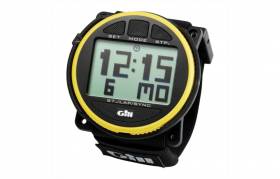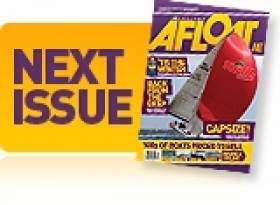Displaying items by tag: October
Get Winter Ready With CH Marine’s October Special Offers
Getting ready for winter will surely be a breeze thanks to great deals in CH Marine’s monthly specials for October.
After liftout, towing away has never been easier than with the Optiparts launching trolley, now only €189.95.
This lightweight aluminium trolley comes with hull supports and a unique system to lock the bow in a simple movement.
Prevent condensation and damp ruining your boat and sails over those colder months out of the water with Meaco’s popular 10-litre compressor dehumidifier. Usually €179.95, it’s now available for only €161.95.
Keeping your things dry is also the key function of the Zhik drybag, with 25 litres of space and available in black or ash — now down from €38.95 to €24.95, more than a third off the RRP.
Those looking to carry on through the winter will want to be well equipped for the elements.
The Baltic Flipper buoyancy aid (now only €89.95) is stylish, comfortable and reversible, and will keep you afloat while being easy to swim in.
Pair it with Optiparts Windesign Neoprene boots, designed for dinghy sailing and available in various sizes for adults (€39.95) and juniors (€31.95) alike.
This month CH Marine also has a super deal on an ex-charter Laser 4.7 or Radial boat package — save over €500 on a Youth Worlds ex-charter Laser in ice blue with only seven days’ use.
And don’t forget CH Marine’s other October offers on the latest tech to keep track of your wheres and whens on deck.
CHMarine.com ships worldwide with free delivery to addresses in Ireland and Northern Ireland for orders over €50.
Get the latest tech to keep track of your wheres and whens on deck in CH Marine’s specials for October.
Gill Marine’s Regatta Race Timer — now only €69.95 — features a large face with a clear dot matrix display, a 50-lap memory and countdown timer.
Water resistant up to 50 metres, it works as well on the mast or bulkhead as well as on your wrist. Available in yellow, black or red.
You can also save €15 on Plastimo’s essential Iris 50 Hand Bearing Compass with night illumination — RRP €79.95, now only €64.95.
This highly dependable companion of yachtsmen, regatta addicts and top-notch racers worldwide is waterproof, shockproof and compact, and available in yellow or blue.
CHMarine.com ships worldwide with free delivery to addresses in Ireland and Northern Ireland for orders over €50.
Click HERE to find the full selection of CH Marine’s October special offers available while stocks last.
Paul O'Donovan is Afloat Rower of the Month
#Rower of the Month: The Afloat Rower of the Month for October is Paul O’Donovan. The UCD lightweight was quite outstanding at the Ireland trial. He was by far the fastest single sculler, setting a time of seven minutes 21.24 seconds in the heat and 7:22.63 in the final. Paul O’Donovan, in combination with his brother Gary O’Donovan, has been rightly feted for qualifying the Ireland lightweight double for the Olympic Games, and he has continued to set an exemplary standard.
Rower of the Month awards: The judging panel is made up of Liam Gorman, rowing correspondent of The Irish Times and David O'Brien, Editor of Afloat magazine. Monthly awards for achievements during the year will appear on afloat.ie and the overall national award will be presented to the person or crew who, in the judges' opinion, achieved the most notable results in, or made the most significant contribution to rowing during 2015. Keep a monthly eye on progress and watch our 2015 champions list grow.































































